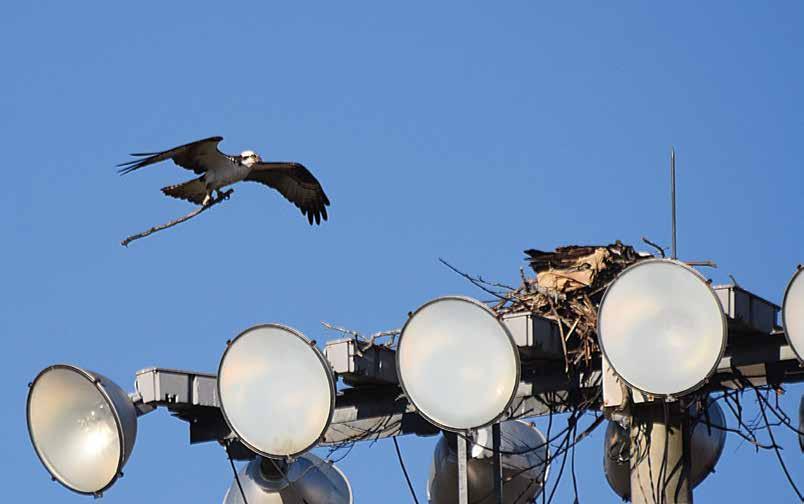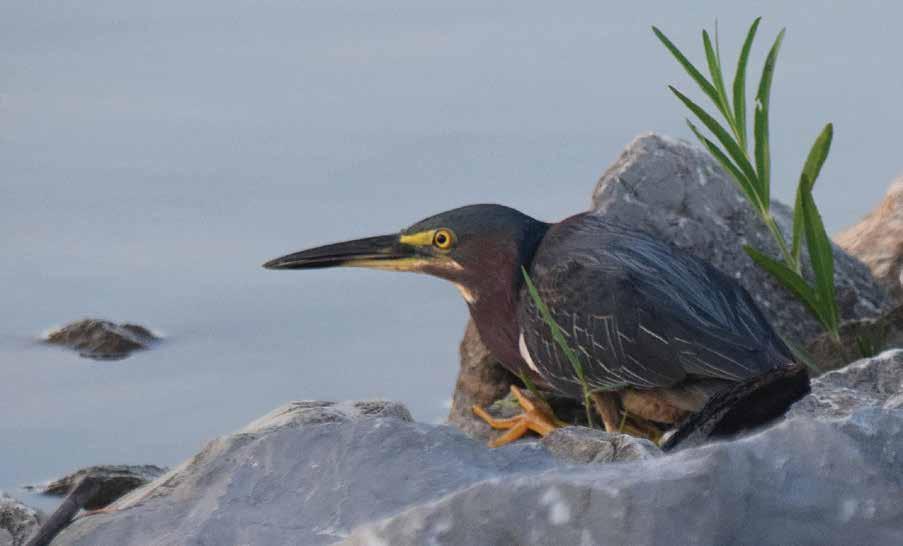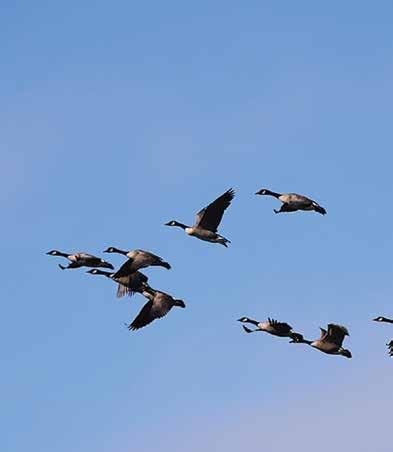
3 minute read
A place for flight
Water Birds Make Their Homes On Logan Martin
What could be nicer than a leisurely stroll on a sandy beach, with water gently lapping at the shoreline and sea birds noisily going about their various life tasks? Now imagine this scene, not in Florida or Lower Alabama, but on a sandy swimming area at a manmade lake, more than 300 miles from the nearest saltwater.
Advertisement
Almost from the day it was fully impounded in the early 1960s, Logan Martin Lake has hosted ever-increasing numbers of birds more commonly found near oceans. Among them are many varieties of sea gulls and pelicans, along with eagles, ospreys and other fish-loving species.
They frequent every part of the lake, in harmonious company with other inland water birds such as cormorants, green herons, great blue herons, great white herons, cattle egrets and every kind of goose and duck imaginable, of both local and migratory species.
Canada geese, mallards and wood ducks all share the abundance of minnows and other aquatic life around the banks and mud flats, while ospreys and eagles dive-bomb larger fish over deep water and around the spillways at the dam.
Stealthy green herons are occasionally seen working their way along bank undercuts and riprap. They’re easy to identify because their heads and beaks seem to belong to much bigger birds.
Ospreys love to build big nests from sticks and small tree limbs atop the numerous floodlight platforms and high-tension power lines around the lake. They’re powerful predators, with large beaks and long talons. When hunting, they tend to hover about 50100 feet above the water, then dive-bomb their prey, often going completely underwater.
Ospreys can sometimes be seen flying home with a fish weighing several pounds clutched in their claws, always with the fish’s head pointed forward so that it streamlines into the air.

According to Wikipedia, they are a singular species of bird. If you’ve seen one osprey, you’ve seen them all. They mate for life, breed in early to late spring and may or may not migrate.
Bald eagles have made their home here as well. They have been seen arguing with ospreys over nest sites, although the eagles merely use them for comfortable perches atop high structures, such as power line towers. Eagles build their own nests that are much larger than the osprey nests, often weighing hundreds of pounds. They usually breed in December and January in our area.
White and brown pelicans may be seen floating together in large groups on some isolated backwater, or even in the middle of the lake, sometimes accompanied by flocks of seagulls.
The many varieties of gulls seen around Logan Martin behave pretty much as their littoral counterparts. They are amazing flyers, with wings evolved for speed and agility. Our gulls sometimes leave the lake to descend on local big-box parking lots, scavenging scraps of food waste discarded by environmentally unconcerned humans.
Logan Martin is a birdwatcher’s paradise, also hosting hordes of non-aquatic varieties. Its diverse environment has become home to several species of owls, woodpeckers and songbirds, most of which have little fear of humans. Most of the heron family is well-represented here, including the yellow crowned and black crowned variety. Several sites are especially good for watching.
Local photographer Mary Cason, who frequently walks at Lakeside Park, contributed photos for this story. She says, “You never know what’s going to be around the next bend or over the next hill.” Her photo files are chockfull of her favorite subjects – aquatic fowl. She’s experienced lots of Kodak moments at the park and its environs.

Lakeside Park is a natural sanctuary because of an abundance of foodstuffs, both natural and from folks feeding the various rodents that congregate in such places. In turn, raptors such as owls and hawks, tend to hunt them and keep their population at a reasonable level.





The Coosa Island area is especially rich in pelicans, cormorants and other fish-eaters, but one should respect the privacy of those living there by observing wildlife far away from residences.

There is a nice little park and nature trail at the east end of Logan Martin Dam, appropriately named Logan Martin Dam Park. It’s more secluded and far less crowded than other nature sites, so it’s probably best to visit there in the company of a friend or two. There’s plenty of information online about this and other sites around the lake.
Logan Martin is an ideal, safe area for introducing youngsters to aquatic wildlife, but please don’t feed water birds around public beaches because, as they congregate for feeding, they tend to contaminate the water and make it unsuitable for swimming.
There is a short boardwalk near the Lakeside Park roadway that is perfect for observing, or simply quiet contemplation. The boat launch area has a fishing pier as well as a walking bridge that crosses the slough into the sports fields. Both are excellent birding sites, as are the spacious grounds of the park itself.
Its walking trail is about 1.2 miles long. The main part makes a big loop around the whole park, with an asphalt walkway that passes the native flower garden and mud flats boardwalk, thence uphill while skirting dense forest, backwaters and ending up near the boat launch.
There is another, lesser known woodland section of Lakeside called the Rosa Lorene Morton Nature Trail, accessed just after you enter the park from a small parking lot near the Metro Bank gazebo. It’s purely natural and mostly unimproved, so boots and a walking stick are in order. l










